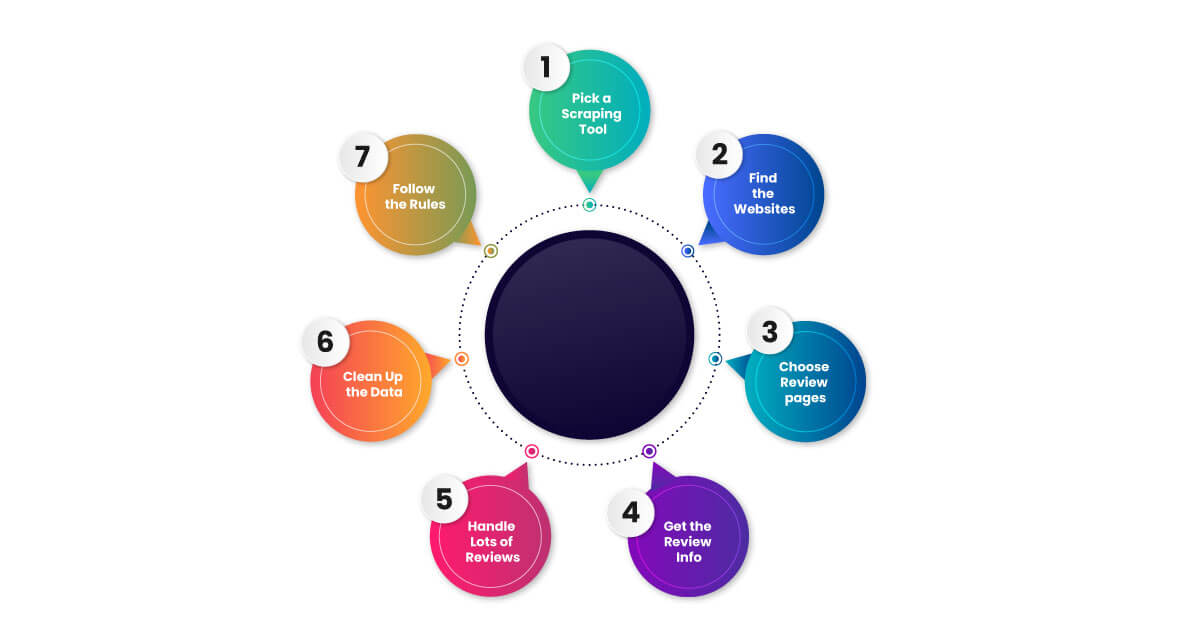Businesses of all sizes want new ways to grow. One popular strategy is scraping customer reviews. This process of eCommerce review scraping lets businesses learn valuable insights about what customers think of their products or services. Scraped data can also improve marketing and create better business plans. While scraping reviews may seem difficult at first, it can be a helpful tool for boosting a business’s profits.
Many factors influence customers’ purchasing decisions. When people decide to buy something, they often look at ratings and read what other customers have said. In fact, almost all customers, about 95%, read product reviews before buying. However, businesses struggle to collect many customer reviews from various websites. Web scraping allows businesses to monitor and gather customer reviews from social media and websites.
What is Product Review Scraping?
Product review scraping refers to the process of extracting and collecting reviews and associated data from e-commerce websites and other online platforms. This data typically includes such as customer ratings, written reviews, product details, reviewer demographics, and timestamps. It involves using special software to automatically collect reviews and feedback from websites like online stores, social media, forums, and review sites.
The reviews are then analyzed to get insights into customer thoughts and feelings towards specific products or brands. This customer feedback data allows companies to gauge product popularity, identify improvement areas, and make more informed choices when creating new products, planning marketing campaigns, and enhancing customer service offerings. Companies find value in understanding customer opinions gathered from online reviews by using review scraper APIs. Businesses scrape product reviews to enhance their products and services based on user feedback and sentiments.
Steps to Scrape Product and Customer Reviews from eCommerce Sites

Businesses can scrape product reviews from eCommerce websites by following a specific procedure that helps ensure a smooth scraping process by using review scraper APIs.
Pick a Scraping Tool
Web scraping tools are like specialized software and review scraper APIs that help you extract data from websites. It includes popular tools, including BeautifulSoup, Scrapy, and Selenium. When choosing a tool, consider factors like ease of use, scalability (how well it handles large amounts of data), and customization options. Some tools are more accessible for beginners, while others offer more advanced features for complex scraping tasks.
Find the Websites
Decide which e-commerce websites you want to scrape reviews from. Review the website’s terms of service and robots.txt file to ensure that scraping is allowed. Ensure you’re not violating any rules or policies by scraping the website’s data without permission.
Choose Review Pages
Once you’ve identified the e-commerce sites, navigate to the specific pages where product reviews are located. These pages could be product detail pages or dedicated review sections where customers leave their feedback. Grab the URLs of these pages so your scraping tool knows where to look for reviews.
Get the Review Info
Use your chosen scraping tool and review scraper APIs to extract relevant information from the review pages. This information typically includes the text of the reviews, star ratings given by customers, details about the reviewers (such as usernames or demographics), and timestamps indicating when the reviews were posted. Pay close attention to the structure of the website’s HTML code to locate and extract the desired elements accurately.
Handle Lots of Reviews
Many e-commerce sites paginate their review sections, which means that reviews are spread across multiple pages. Implement logic in your scraping script to navigate through these pages and collect reviews from each page. It is crucial to make sure that your scraping tool can handle pagination and retrieve all reviews, even if they’re spread across multiple pages.
Clean Up the Data
Once you’ve scraped the reviews, the data may contain noise or inconsistencies that need to be cleaned up. This involves removing unnecessary HTML tags, standardizing formats (such as converting dates to a uniform format), and handling missing values. Cleaning up the data makes it easier to analyze and extract meaningful insights.
Follow the Rules
Adhere to the website’s policies and guidelines while scraping data. Avoid aggressive scraping techniques that may overload servers or violate terms of service. Scrape at a reasonable rate to respect the website’s bandwidth and server resources. Always be respectful and ethical in your scraping practices to maintain a positive relationship with the website and avoid any legal issues.
Continue reading https://www.reviewgators.com/scrape-customer-reviews-from-ecommerce-sites.php



 :
:









